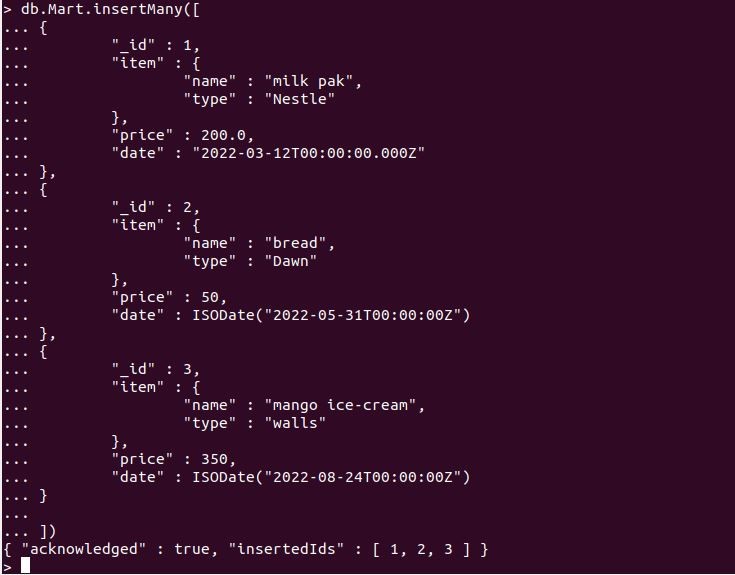ISODate() allows you to visually portray a date in MongoDB as a String while allowing you to use date queries and indexing. The programmer can analyze date objects quickly and visually by enclosing the ISO date String in a function rather than converting it from a Unix timestamp to a time String.
Today, we’ll explore how to create a MongoDB Date greater than a query to retrieve records based on a timestamp or a date range. Examples of MongoDB date queries will be shown, such as MongoDB date greater than time or date, and so on.
Greater than operator($gt) is among MongoDB’s comparison operators. The greater than $gt operator is then used to discover documents where the value of a field is greater than (>) the value set. Depending on your needs, you can utilize this operator in functions such as locating, updating, and so on.”
Syntax of a Date Greater Than Query
The information below demonstrates how to use this syntax in a collection of data in practice.
field_name: {
$gt: ISODate("date"),
$lt: ISODate("date")
}
})
This query returns all entries in the collection with a field name that is greater than or equal to the date passed in the ISODate method but less than or equal to the date returned by the ISODate method. Here $gt denotes the “greater than” symbol, and $lt indicates the “less than” symbol. The preceding steps are simple to follow. There are a few minor changes between these directions, though.
How to Create a Date Greater Than Query MongoDB in Ubuntu 20.04
This section demonstrates how to create a MongoDB date greater than a query that returns records depending on a timestamp. MongoDB date greater than time or date is included in the examples of a date query in MongoDB.
To further understand the concept, let’s create a data collection by inserting the document. The query to create a collection comprising a record is as follows:
First, we have established a database as a “shop” inside the mongo shell. Then, we have given a name to our collection as “Mart” inside the create collection query. As our collection is created, we have used the following query for creating the collection’s document.
In the above figure, we have inserted three documents inside the collection “Mart” with the insertMany query. Instead of inserting a record one at a time, we may use this query to enter a record all at once within the specified collection. Then, in the end, the acknowledged statement inserted the ID’s for the documents that show the documents are successfully inserted in the collection “Mart.”
Now, use these documents of the collection against the date greater than the query in the MongoDB shell. Let’s execute this query in the example implemented below.
Example # 1: Find a Record Between Two Dates in MongoDB in Ubuntu 20.04
To find all documents with a field name between two dates, we ran the following query.
We have utilized the find function here, and within the function, we have called a field “date” from the collection “Mart.” We have done a greater than and less than operation on the date field by giving two different ISODate from the collection. From this query, we yield an ISODate greater than the date “2022-03-12T00:00:00Z” and lesser than the date “2022-03-12T00:00:00Z”.
The above query returns the results between the “greater than” ISODate and “less than” ISODate in the following MongoDB snap shell.
Example # 2: Find a Record Greater Than the Specific Date in MongoDB in Ubuntu 20.04
We are using the greater than operator on the specific date to find the date from the document. And from this, we will get a date greater than a specific date in the query. Let’s demonstrate the statement by executing the query in MongoDB.
We have a db.Mart.find query inside which we have specified the date field. The date field has given a “greater than” operator as $gt, and the $gt operator has been assigned with the ISODate “2022-02-12”. If the ISODate is greater than this date from the document, it only displays those documents.
The above query returns the two documents which have the ISODate date greater than the date given to the $gt operator.
Example # 3: Retrieve a Record Based on a Date in MongoDB in Ubuntu 20.04
We are retrieving the record from the collection, where the date field matches the ISODate given in the query. We have utilized the greater than equal to operator. Let’s consider the example of using MongoDB to give a query based on the current date.
In the above query, we have a date field inside the find function. The date is using the greater than equal to operator “$gte” and specified the $gte operator the ISODate with utilizing the new keyword. After that pretty method is used at the end of the query to display the results in an easier format.
The date returned by the above query is shown in the following snapshot.
Conclusion
This article is based upon a date greater than the query in MongoDB. We have begun with a brief introduction where the Date function and the $gt operator in MongoDB are briefly explained. Also, we have shown the syntax of a date greater than the query. This article clearly shows you using the Date() method. The $gt and the $gte queries are also described in detail with examples. The use of code snippets to explain well how to retrieve a query-dependent date is also demonstrated.







